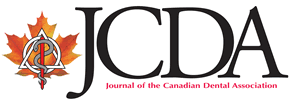 |
Current Issue | Subscriptions | ||||||
| Back Issues | Advertising | |||||||
| More Information | Classified Ads | |||||||
| For Authors | Continuing Education | |||||||
|
||||||||
 |
|
Examining the Implications of Dental Treatment Costs for Low-Income FamiliesFULL TEXT
• Patrick Snow, BSc • A b s t r a c tMaterials and Methods: A chart review was conducted for a sample of 213 new patients examined at the Dalhousie University dental clinic over a 1-year period. Costs for proposed treatment plans were averaged. The patients' ability to pay for proposed treatment was examined in the context of various income scenarios. Results: Two hundred and one patients were included in the final analysis. Dental treatment costs per patient averaged approximately $1600 for the year, with 42% of the planned treatment completed within the first year. The estimated monthly cost of completed treatment was $55. When the cost of a healthy diet was included in the monthly budget, it was determined that families in Nova Scotia with parents working for minimum wage and those receiving income assistance would experience a 100% shortfall for dental expenses. Conclusions: Low-income families in Nova Scotia were unable to afford both a nutritious diet and dental care. This is disturbing, given the links between a healthy diet and both overall health and dental health. An understanding of the significance of income shortfalls for those with low incomes, especially as they affect even basic nutritional needs, will help dental professionals to appreciate the seriousness of this issue and the difficulties that many Canadians face when trying to access basic dental care.
|
|
|
Full text provided in PDF format |
|
| Mission Statement & Editor's Message |
Multimedia Centre |
Readership Survey Contact the Editor | Français |
|